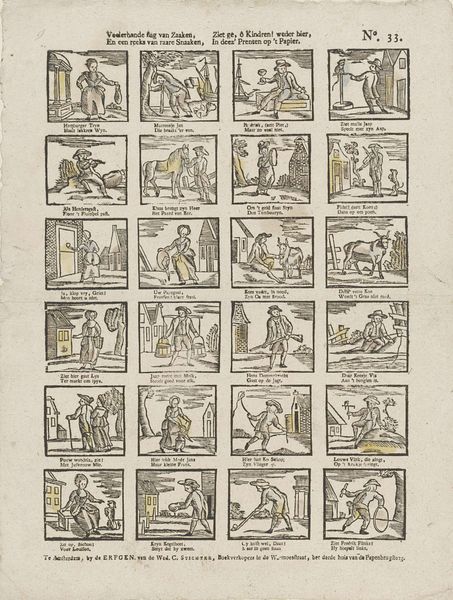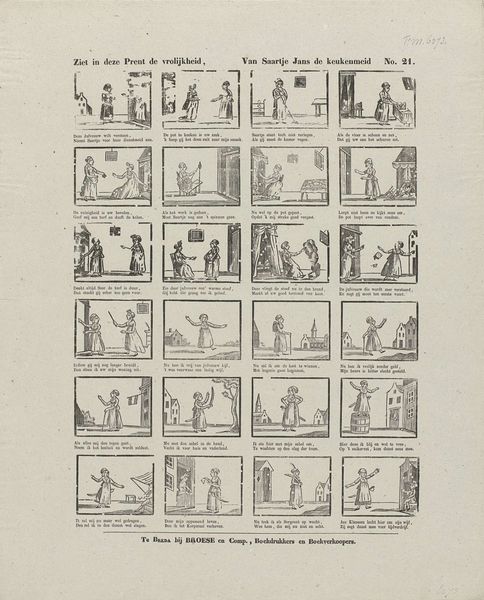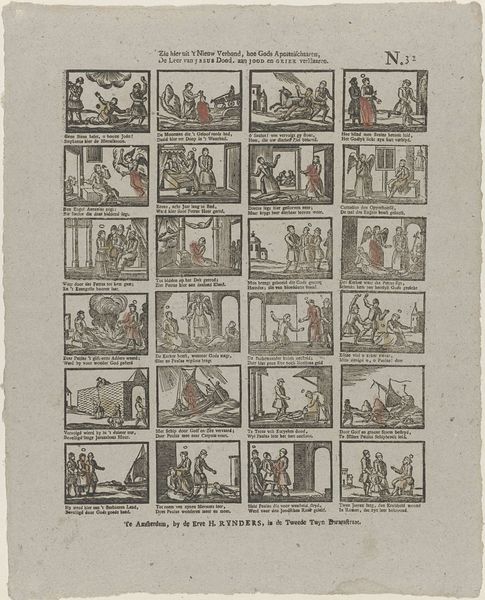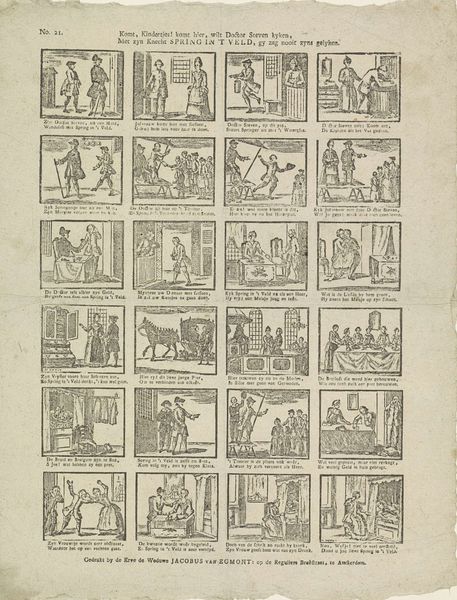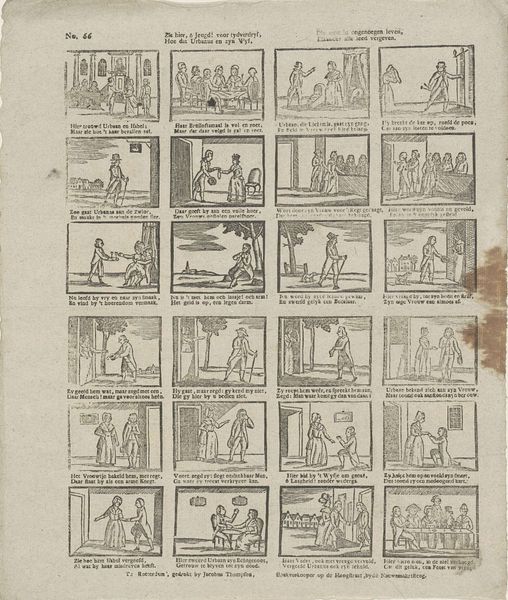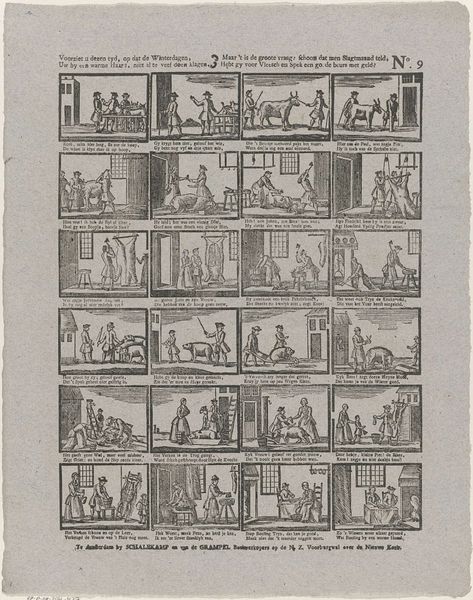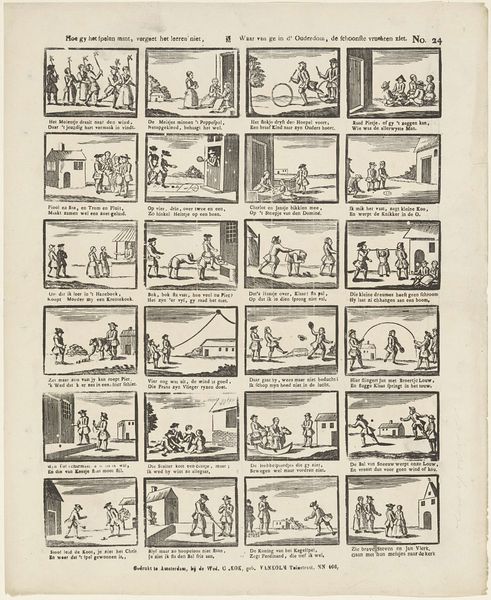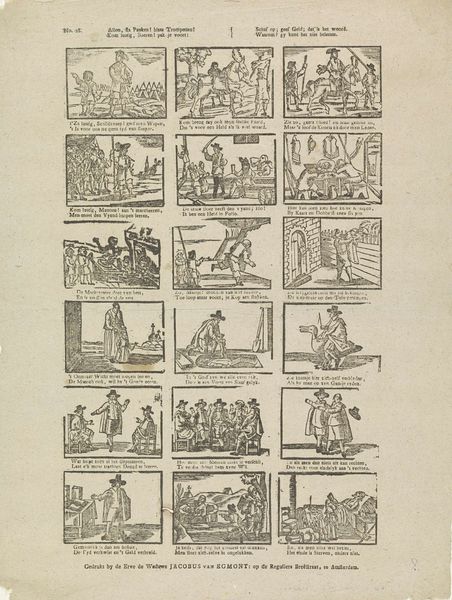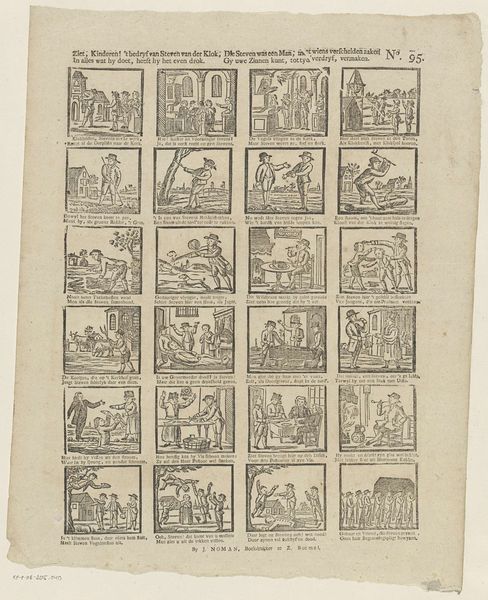
Zie, Jeugd! hoe zich Urbaan gedraagt / En Izabel haar Lot beklaagt / Maar zie ook hem, die trouw dorst breeken, / Weêr aangenomen op zyn smeeken 1715 - 1813
0:00
0:00
print, engraving
#
narrative-art
# print
#
genre-painting
#
engraving
Dimensions: height 430 mm, width 340 mm
Copyright: Rijks Museum: Open Domain
This print was made in Amsterdam by the widow of Cornelis Stichter. It’s a moralizing tale, told in a series of captioned images. Prints like this were part of a lively print culture that reflected, and helped shape, social norms in the Netherlands. Consider the burgeoning middle class of the time, and their anxieties about proper behavior, especially for the young. The story shows a young man, Urbanus, behaving badly, breaking promises to Isabel, but ultimately being forgiven. The visual codes – clothing, settings, body language – all speak to the values of the time: fidelity, repentance, forgiveness. It's interesting to consider what institutions, like the family and the church, are being upheld here, and what social roles are being reinforced. The print isn't just art, it's a form of social instruction. To understand this work more fully, we might research Dutch social history, popular print culture, and the role of women in 18th-century society. Art history gives us not just aesthetic appreciation, but insight into the values of the past.
Comments
No comments
Be the first to comment and join the conversation on the ultimate creative platform.

